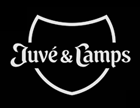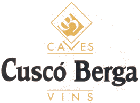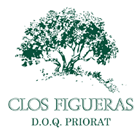Dominio dela Vega
by
Kathy and Terry Sullivan
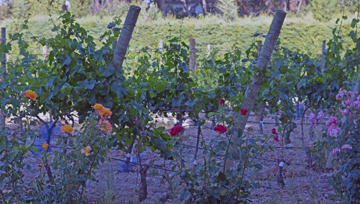 Summary: Dominio de la Vega is a delightful winery to visit in the Valencia province of Spain. In addition to the traditional cava grapes growing in their vineyards, they also grow the Bobal variety.
Summary: Dominio de la Vega is a delightful winery to visit in the Valencia province of Spain. In addition to the traditional cava grapes growing in their vineyards, they also grow the Bobal variety.
On a warm June day, we arrived at Dominio de la Vega in the Utiel-Requena region, to an array of colorful roses near the mansion and vineyard rows. The original house was built at the end of the 18th century by Count Ferrer de Plegamans. Eventually, the current winery owners purchased the Casa-Bodega del Conde de Villamar and made major renovations greatly increasing the size and added gracefulness. A row of roses and evergreens directly in front of the door adds to the elegance. To both sides, vineyards grow prolifically.
Dominio de la Vega was established by three families. The owners are part of the six families who started cava production in this area in the1980s. In 2001 Dominio de la Vega was founded based on the idea that the owners wanted to create great cavas and wines while respecting the terroir.
Vineyards
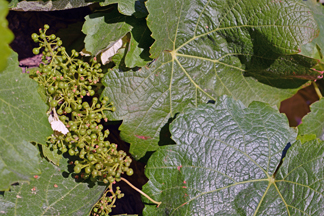 We visited a large vineyard near the winery mansion. During a tour wine enthusiasts discover that the winery has 100 hectares (247 acres) of vines in three distinctly different locations. The area near the winery is close to the River Madro. The land near the river is very fertile and is called a “vega.” Vineyard plantings include Macabeo, Chardonnay, Pinot Noir and Xarel.lo and Bobal. The second vineyard, La Muelia, is 10 kilometers (6 miles) from the winery and planted with Bobal grapes. Several grape varieties are planted in the third vineyard, Pinarejo, including Chardonnay and Pinot Noir. Most vines are more than 40 years old with an exception of a recently planted Xarel.lo. Of the grapes mentioned, all except Bobal are used in cava production. Bobal is the main red grape in the Utiel-Requena DO.
We visited a large vineyard near the winery mansion. During a tour wine enthusiasts discover that the winery has 100 hectares (247 acres) of vines in three distinctly different locations. The area near the winery is close to the River Madro. The land near the river is very fertile and is called a “vega.” Vineyard plantings include Macabeo, Chardonnay, Pinot Noir and Xarel.lo and Bobal. The second vineyard, La Muelia, is 10 kilometers (6 miles) from the winery and planted with Bobal grapes. Several grape varieties are planted in the third vineyard, Pinarejo, including Chardonnay and Pinot Noir. Most vines are more than 40 years old with an exception of a recently planted Xarel.lo. Of the grapes mentioned, all except Bobal are used in cava production. Bobal is the main red grape in the Utiel-Requena DO.
Daniel Expósito, the enthusiastic oenologist at Dominio de la Vega, pointed out during our vineyard tour that the wines begin in the vineyards and should reflect the terroir of the land. Daniel’s enthusiasm for the vineyards was inspiring. We visited a Bobal vineyard next to the mansion. The aged trunks were thick and the berries were at the berry shot stage during our early June visit. Daniel mentioned that we are 70 kilometers from the Mediterranean Sea. The climate is warm, but it cools at night.
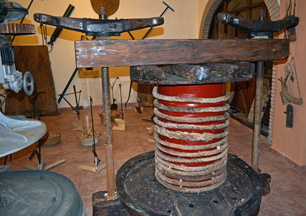 Museum and Winery
Museum and Winery
Our tour continued inside the historic house, where we discovered a museum of vintage vineyard equipment and miscellaneous farm artifacts. We saw some unusual artifacts including a tin container with a rectangular hole cut out near the top. Wine filled to the level of the hole would measure two liters. An assortment of vineyard tools hang on the walls. Visitors can also view pumps, presses and carts. We also saw large toboggan-like boards with sharp stones embedded in them. These particular boards were for tramping wheat into flour.
Outside of the museum there is a large patio area with beautiful landscaping. The space is used for special events. The wine production area is filled with stainless steel tanks and equipment brightening up the grey cement decor of the large area. Harvested grapes are vinified separately by variety and vineyard. For the coupage, the winemaker will blend the different base wines.
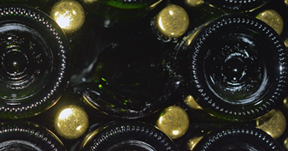 Our tour continued underground in the cellars. Red earth tones of bricks contrasted with the gray cement walls and floor. Horizontal cava bottles alternate rows in rimas; one row of shiny golden colored caps, followed by a row of the punts of the bottles. One bottle had a miserable fate exploding the punt out (pictured). Although there are a few cement riddling racks, gyropalettes are filled with cava mechanically riddling the bottles. A long, reddish, earth tone colored tunnel runs from one chamber to the next. Lighting fixtures help to paint a stylish appearance to the ceramic-lined tunnel.
Our tour continued underground in the cellars. Red earth tones of bricks contrasted with the gray cement walls and floor. Horizontal cava bottles alternate rows in rimas; one row of shiny golden colored caps, followed by a row of the punts of the bottles. One bottle had a miserable fate exploding the punt out (pictured). Although there are a few cement riddling racks, gyropalettes are filled with cava mechanically riddling the bottles. A long, reddish, earth tone colored tunnel runs from one chamber to the next. Lighting fixtures help to paint a stylish appearance to the ceramic-lined tunnel.
Tasting Room
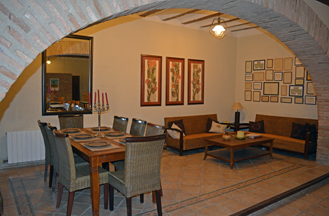 Our tour ended in a large tasting room area adjacent to the museum. There are different seating arrangements to make tasting cavas and wines a comfortable, relaxing experience. One area looks like a home’s dining room and living room. The dining room table is set for six people. Another area has a long, narrow table. At the end of this area there is a beautiful wall tapestry depicting the grape harvest and pressing.
Our tour ended in a large tasting room area adjacent to the museum. There are different seating arrangements to make tasting cavas and wines a comfortable, relaxing experience. One area looks like a home’s dining room and living room. The dining room table is set for six people. Another area has a long, narrow table. At the end of this area there is a beautiful wall tapestry depicting the grape harvest and pressing.
Cava and Still Wine
The Cava Brut Reserva was a blend of 70% Macabeo and 30% Chardonnay. Of that blend, 20% was aged in oak for three months. The cava was a yellow color and had quick rising bubbles in a bead forming a mousse on the surface. The cava was floral with apple and citrus notes. The creamy texture in the mouth was accompanied by a delightful mouthfeel. Apple and citrus were on the finish. This was not a usual wine tasting. The cava was placed in two different glasses for us to compare. One glass was a flute, the other was a tulip-shaped glass. Later a white wine glass was added for us to compare. The tulip-shaped glass seemed to allow the cava to express itself better than the other stemware. The cava was paired with a pastry containing bolo ham and sausage.
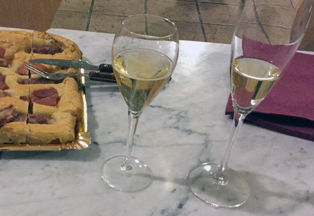 The two vintage wine, 2009 and 2011 Artemayor Brut Nature Gran Reserva was a blend of 60% Chardonnay and 40% Macabeo. The yellow colored cava was disgorged in December 2014. Multiple beads of bubbles formed a mousse on the surface. There was a hint of oak on the aroma and taste that were predominantly apple, pear and mineral. The cava had a creamy texture and delightful mouthfeel. The fresh, crisp finish had a hint of caramel.
The two vintage wine, 2009 and 2011 Artemayor Brut Nature Gran Reserva was a blend of 60% Chardonnay and 40% Macabeo. The yellow colored cava was disgorged in December 2014. Multiple beads of bubbles formed a mousse on the surface. There was a hint of oak on the aroma and taste that were predominantly apple, pear and mineral. The cava had a creamy texture and delightful mouthfeel. The fresh, crisp finish had a hint of caramel.
The 2012 Brut Reserva Especial was a blend of 70% Macabeo and 30% Chardonnay; aged for 22 months. The dark yellow colored cava had multiple beads of bubbles forming a mousse on the surface. The aroma was floral, while the taste offered apple, floral notes and pear with a lively to aggressive mouthfeel. Fruit and mineral were on the finish.
A 2012 Paraje Tornel Bobal was 100% Bobal aged in oak for 12 months and then in the bottle for an additional 12 months. The wine had a dark purple to black color and plum, blackberry and licorice were on the aroma and taste. The wine was full-bodied with tannins and a fruity finish.
We sampled the sweet wine Dulce, a blend of Sauvignon Blanc, Chardonnay and Macabeo. It had some dried fruits such as dried apricots and dried peaches. It also provided floral notes with notable honeysuckle, daisies and roses. It brought smiles to faces.
Wine Tourism
On some Saturdays and Sundays, visits are available with reservations accepted by phone. If you have the opportunity, plan to visit Dominio de la Vega soon.
Dominio de la Vega
Carretera Madrid-Valencia, km 270,650
46390 San Antonio
(Valencia) Spain
Article written June 2015
Please support the following.
 |
|||
 |
 |
